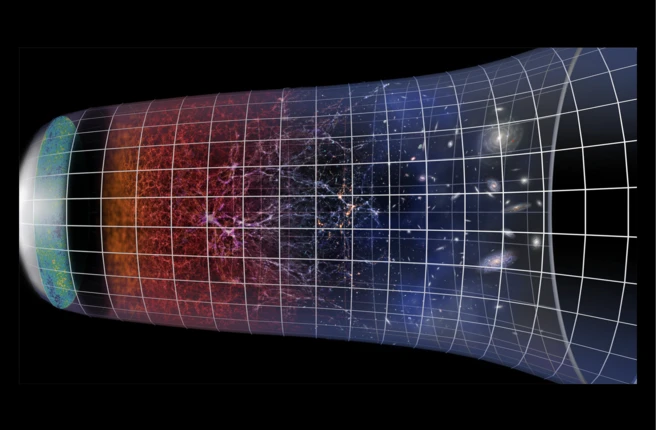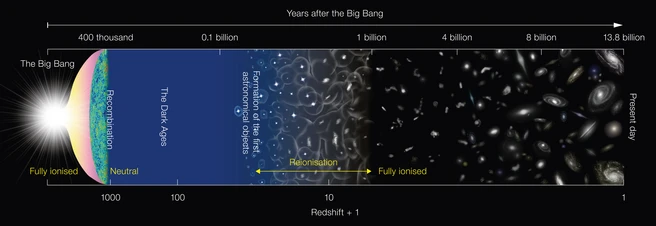This finding is the result of a theoretical study published in Physical Review Letters, co-autored by Prof. Marco Drewes, Mercator fellow of the Collaborative Research Centre 1258 (SFB1258) at the TUM School of Natural Sciences.
Inflation — a period of extremely rapid expansion shortly after the Big Bang — is the leading explanation for the origin of the large-scale structure of the Universe. In the conventional picture, space expands extremely fast in a very cold vacuum. Such “cold” inflation often requires highly fine-tuned potentials or entirely new forces beyond the Standard Model. Warm inflation, proposed already in 1995, instead assumes that there is heat — a thermal bath — present during acceleration. Until now, theorists believed that warm inflation cannot be powered by Standard Model physics alone, because particles produced in the process would suppress the necessary conversion of inflaton energy into heat.
The authors — among them Prof. Marco Drewes from the University of Louvain (Belgium) and Mercator Fellow of the Collaborative Research Center 1258 (SFB1258) at Technical University of Munich — show that this suppression is naturally overcome by the expansion itself: the exponential growth of spacetime dilutes the disturbing particle effects so strongly that they no longer block warm inflation. This can be realized through a minimal scalar field coupled to gluons, the mediators of the strong force.
“Our model, with only one adjustable combination of parameters, fits all current cosmology data — and is rooted in Standard Model physics,” says Drewes.
The same type of coupling — between an inflation field and the strong force — also appears in axion theories, possible dark matter candidates that are currently being searched for in laboratories worldwide. “This also opens a new potential bridge between early-Universe physics and upcoming lab experiments,” Drewes adds.
Additionally, the model also naturally leads to a smooth transition from inflation to the subsequent ordinary expansion of the Universe — addressing the long-standing “graceful exit” problem of inflationary theory.
Publication
Kim V. Berghaus, Marco Drewes, and Sebastian Zell: Warm inflation with the Standard Model Phys. Rev. Lett. 135, 171002, 23 October 2025 DOI: https://doi.org/10.1103/9nn9-bsm9
Further information and links
- SFB 1258: Neutrinos and Dark Matter in Astro- and Particle Physics https://www.sfb1258.de/
- Secret route to warm cosmic ‘inflation’: the nuclear force https://www.nature.com/articles/d41586-025-03414-9
- Physicists Propose a Simpler, Hotter Origin for the Cosmos https://www.scientificamerican.com/article/did-dark-matter-help-supersize-the-universe/
- The beginning of the universe: Cosmic inflation with standard particle physics repertoire https://phys.org/news/2025-10-universe-cosmic-inflation-standard-particle.html
Lief der Urknall völlig anders ab als gedact? https://www.spektrum.de/news/warme-inflation-lief-der-urknall-voellig-anders-ab-als-gedacht/2293397 (in german)
Contact about this article
Prof. Dr. Marco Drewes
Technical University of Munich
School of Natural Sciences
Collaborative Research Centre 1258
Garching, Germany
E-Mail: marco.drewes@tum.de
Original article: https://www.sfb1258.de/press/detail/warm-inflation-may-work-with-standard-model-physics-alone

